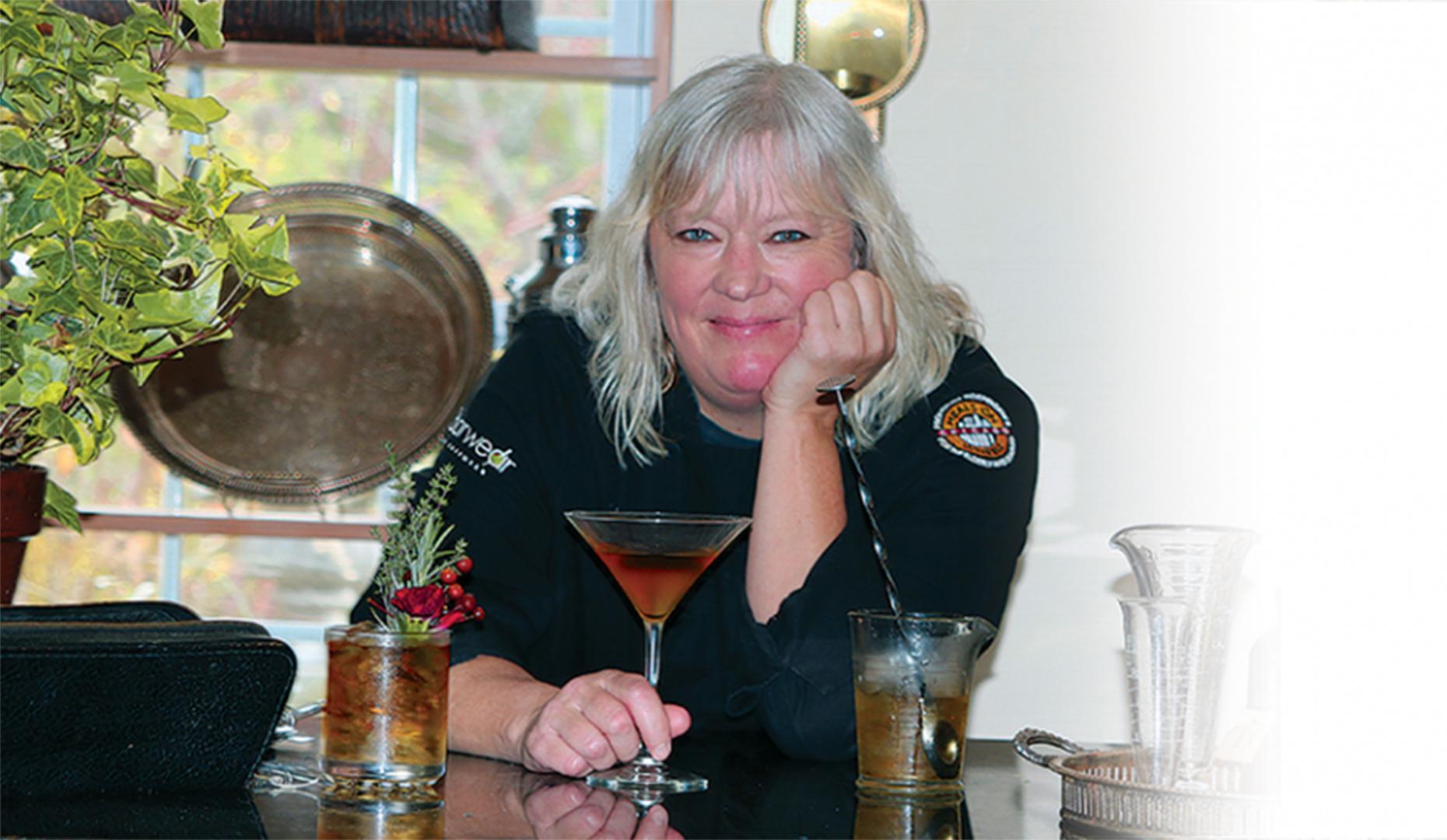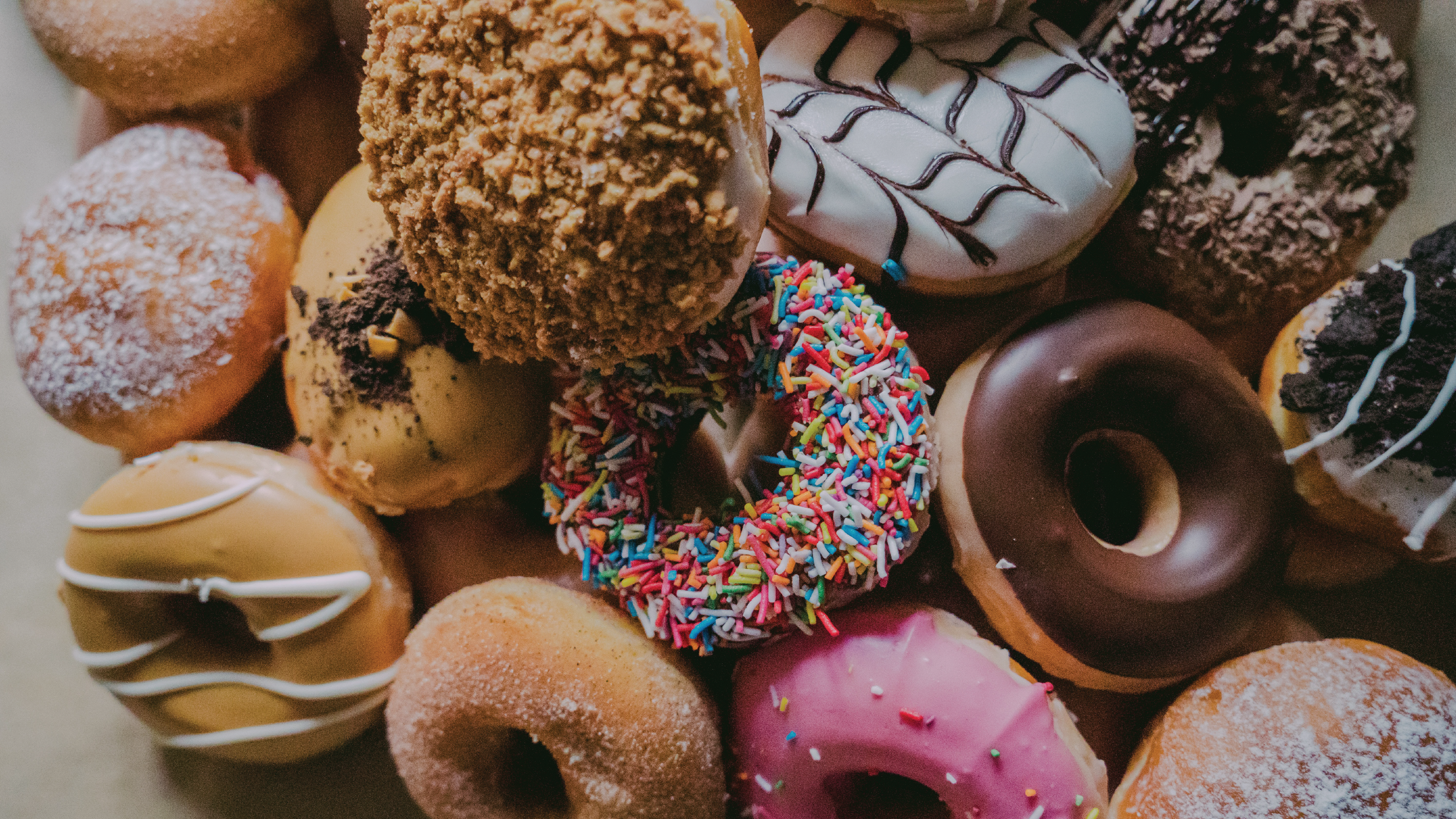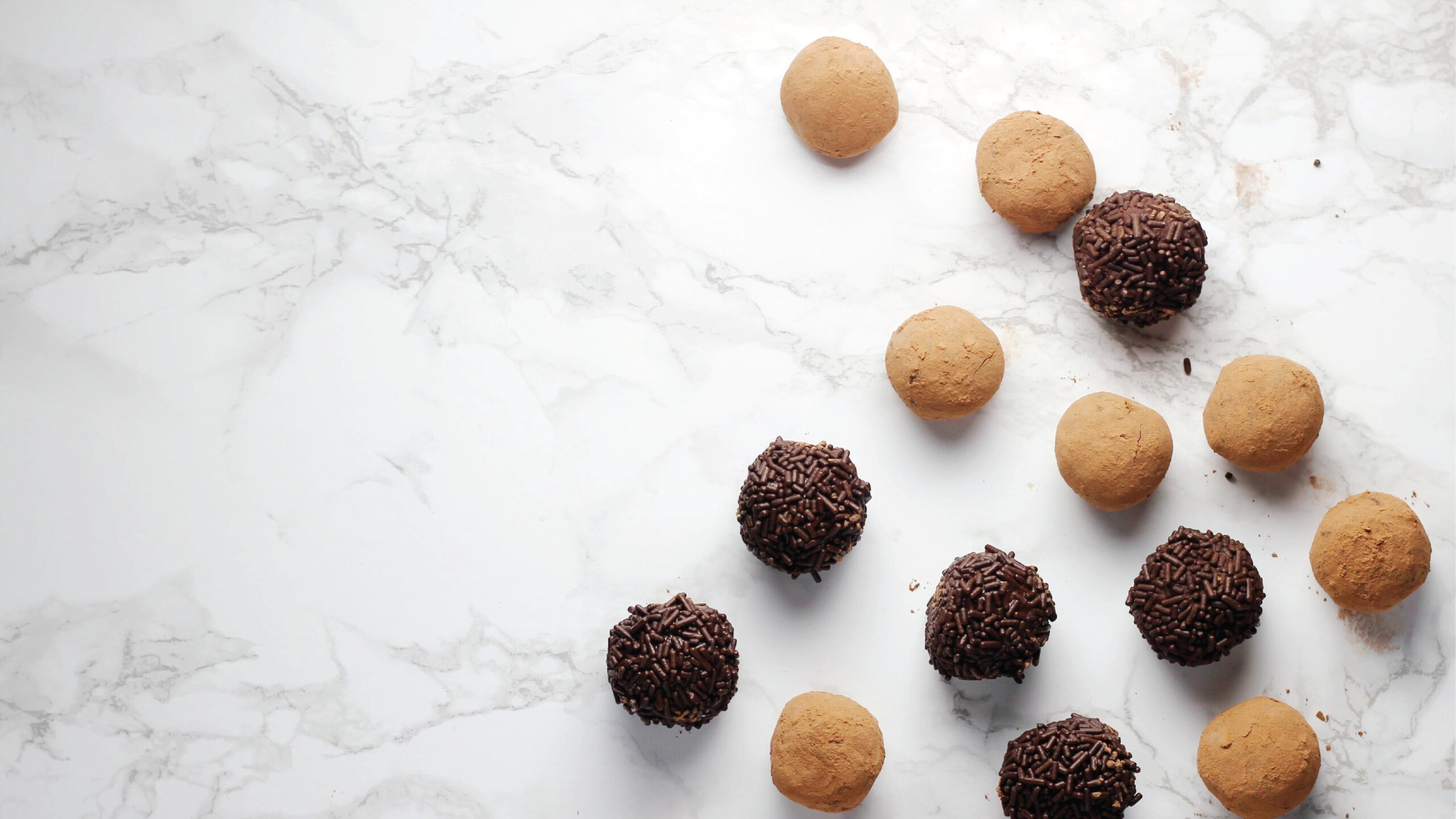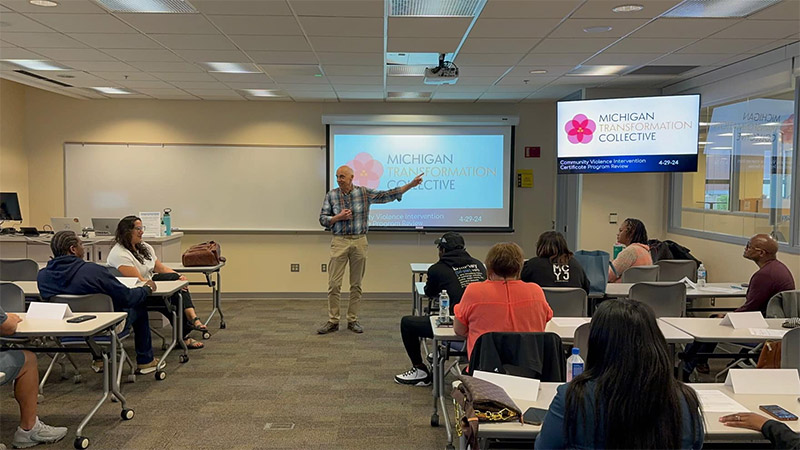Angie Jackson gives us a look inside the Chief Mixologist Bar Program at Green Door Distilling Company.
What is your profession?
The professional term is Master Culinary Mixologist. I like to say I’m preaching and teaching the gospel of fine-crafted cocktails, using seasonally fresh, locally sourced items. The less pretentious term I also like to use is “Traveling Elixir Fixer.”
How does one become a Master of Culinary Mixology?
There are several schools and academies in Chicago that teach this craft. It took me four years of schooling to get to that level. I studied under Master Mixologist Bridget Albert, and with New York mixologists through the Beverage Alcohol Resource Educational Program.
What did you learn?
There are levels of certifications obtained through testing knowledge of how distillates are processed, their origination, their flavor profiles, as well as being well-versed in the classic cocktail families. Once well-versed, you can do just about anything. There is a method to “liquid madness!”
How did you get started?
This profession picked me. I didn’t pick it. I play guitar and banjo and I moved to Chicago as part of a singer-songwriter duo. I became a bartender to supplement my income. Once I decided to focus on my bartending skills, I found the Academy of Spirits and Fine Service. At this point, I had already been bartending for ten years. I thought I’d just jump through the hoops and take the class to get the U.S. Bartenders’ Guild certification. What I found was that I didn’t know anything.
Why are you called “The Traveling Elixir Fixer?”
I served as Adjunct Professor at Chicago’s Kendall College, where I taught its Mixology Series offered through the Culinary Arts, Food and Beverage and Hospitality Departments.
Now, I freelance. The “Traveling” part is because I work with a lot of bars and restaurants within a three-hour radius to develop their beverage programs and train their bartenders. I chose “Elixir Fixer” because my family’s roots stem from the Upjohn family tree. I give a tip of my medicinal hat because spirits were originally intended for therapeutic purposes. So, I cure what ails you with the craft of cocktails. The cure doesn’t necessarily have to include spirits either. Just last week, I used non-alcoholic compounds to treat a cold, two cases of indigestion, and two cases of acid reflux. I make tonics, apple vinegar-based shrubs, and bitter components too. The colonists used what grew here to make whiskey from rye and bourbon from corn. Without purified water at that time, ciders and spirits were a healthy substitute for water to sustain oneself or purify your system if you ate something bad.
What are some of your most memorable “Travels?”
In 2009, I shook cocktails at the James Beard Awards, the “Academy Awards” of food and drink, in New York City. I’ve bartended at the Christmas party in the Playboy headquarters on North Lakeshore Drive in Chicago. I’ve set up a bar in an elevator at a Chicago art gallery. We’d move up and down floors, open the doors, make drinks and then move on.
Do you “mix up” your skills?
Right now, I’m studying the art of coffee and how it’s roasted. I’m tasting coffees from different regions; the subject is vast.
What mixing skills should people develop?
Knowing when to shake and when to stir! Cocktails that contain only spirits should be stirred. Cocktails that contain creams, juices and sugars should be shaken.
What are your favorite seasonal add-ins?
Fall and winter flavors like cinnamon, nutmeg, maple, all-spice and clove. Other terrific products are apple cider; my favorite is from Schultz Farm in Mattawan, and apple cider simple syrup.
How can someone get into one of your classes or book your services for a private event?
In Kalamazoo, I’m at Old Dog Tavern, Webster’s, and Green Door Distilling Company, and in Portage at Stick & Stones. Find me on my Facebook page: TravelingElixirFixer.
Bar Basics, According to Angie
Ingredients
- Vodka
- Gin
- Rum
- Tequila
- Whiskey (Angie recommends Michigan-made Journeyman Distillery Silver Cross Whiskey or Old George 100% Rye from Grand Traverse Distillery)
- Angostura bitters (The salt and pepper of drinks)
Equipment:
- A good Boston shaker
- Mixing glass
- Hawthorne strainer
- Bar spoon
- A good chef’s knife
The Catalyst Elixir
Just like any typical catalyst increases the rate of a chemical reaction, the Catalyst Elixir offers an interesting twist on a cocktail as it allows a base mixture to adapt to componentmixes to change with seasons or occasions. After creating the base, it may be mixed with ginger ale, club soda or other clear sodas with a few seasonal berries (blueberry is sensational in this drink!) for a spring or summer highball, sparkling white wine for a twist on a brunch mimosa or celebratory occasions. The Catalyst Elixir is quite versatile to ever changing moods, occasions and seasons as well as availability of locally sourced ingredients. This is one versatile sipping elixir!
The Catalyst Elixir Base
- 1 1/4 ounces St. Julian Grey Heron Vodka
- 3/4 ounce St. Julian A&G Brandy
- 1 orange (cut 1/2 orange into 4 wedges, fresh press the juice from other half)
- 1 ounce ginger honey syrup (recipe below)
- 1/2 ounce fresh pressed lemon juice
- 2–3 dashes Fee Brothers Orange Bitters
- Fresh basil
Gently muddle 3 orange wedges with ginger honey syrup, lemon juice, bitters, 1 1/2 ounces fresh pressed orange juice, and 3-4 basil leaves in a sturdy mixing glass. Add vodka and brandy. Shake ingredients with ice for 10 seconds. Strain.
Highball Instructions
Strain Catalyst Base Mix into an ice filled highball glass. Top with ginger ale, club soda, clear soda (Sprite or 7-up) and stir well. Optional garnish includes fresh basil sprig, fresh seasonal berries, remaining orange wedge,
Sparkling Wine Instructions
Strain 2 ounces of Catalyst Base Mix into a champagne flute and top with a sparkling white wine such as French Champagne, Italian Prosecco, Spanish Cava, or American Sparkling White. Garnish with fresh basil sprig and remaining orange wedge.
Non-Alcoholic Instructions
The vodka and brandy may be omitted for a non-alcoholic version of the Catalyst Elixir in highball and sparkling non-alcoholic juice wine styles.
Ginger Honey Syrup
Heat 2 cups of water over medium heat. Add 1 cup of skinned chopped ginger. Simmer ginger for 45 minutes on low heat. Remove ginger and add 1 1/2 cups of locally sourced honey. Stir well and remove from heat. Allow to cool and then pour into a bottle and refrigerate. Syrup will last approximately 10 days.




